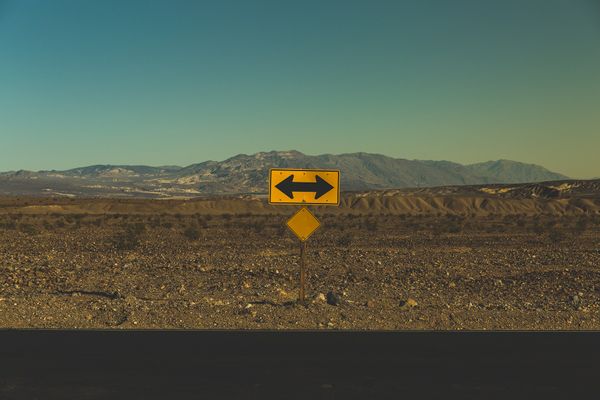6.5.1
Stakeholders
Types of Stakeholder
Types of Stakeholder
Different stakeholders have different criteria for assessing the success of managing change in diverse urban communities.


What are stakeholders?
What are stakeholders?
- Stakeholders are any groups or individuals involved in or interested in change.
- They range from residents, environmentalists and businesses to local councils and planners.
- They can also be classified into providers, users/beneficiaries, managers and influencers.


Provider stakeholders
Provider stakeholders
- Provider stakeholders are the owners of the land/area being changed, and the people who will do the change e.g. builders.


User/beneficiary stakeholders
User/beneficiary stakeholders
- User/beneficiary stakeholders include those who will make use of the change(s) either directly or indirectly.


Manager stakeholders
Manager stakeholders
- Manager stakeholders are those who control and regulate the changes e.g. governments.


Influencer stakeholders
Influencer stakeholders
- Influencer stakeholders are those that have an opinion either before or after a change and may seek to adapt or prevent the change taking place.
- They may be local, national or international in scope.
Attitudes of Different Stakeolders
Attitudes of Different Stakeolders
Stakeholders are affected differently and therefore have different attitudes towards issues.


Directly/indirectly
Directly/indirectly
- Most stakeholders fall into two categories – those directly affected by the change and those indirectly affected.
- Each of these can be further subdivided into those having a positive attitude, and those having a negative attitude; note some may be indifferent.
- Several stakeholders may also have a ‘vested’ interest in a change based on their own personal objectives and perceptions.


Success and failure
Success and failure
- The reality and image of the place after change may not be the same for all.
- Assessing ‘success’ or ‘failure’ will depend on a range of criteria, some of which are personal.
- Often the best way to resolve an issue is by consensus and compromise.
Challenges Facing Rural Areas
Challenges Facing Rural Areas
There are many challenges facing stakeholder decisions in rural areas. These are important to think about in terms of rural case studies.


Economy and infrastructure
Economy and infrastructure
- Rural communities have lower incomes than urban areas.
- There is a need to diversify the rural economy.
- E.g. Strategies in areas such as the Lake District and Snowdonia.
- Access to modern infrastructure, such as high-speed broadband, is vital for both modern life and rural businesses.


Housing and services
Housing and services
- There is a shortage of affordable housing in rural areas.
- Many young people are forced out by the purchase of second-homes by people living in urban areas.
- In some national parks, there are restrictions on house construction.
- Rural areas are less-well provided for in terms of transport, education, healthcare and retailing.


Tourism and conservation
Tourism and conservation
- Tourism is a key industry supporting employment, but excessive levels of tourism can impact negatively on a rural area.
- Many rural communities have important natural and/or historic heritage features which provide the basis for tourism.
- These resources need to be carefully managed.
1Tectonic Processes & Hazards
1.1Tectonic Processes & Hazards
1.2Natural Disasters
1.3Natural Disaster Case Studies
1.4Trends & Patterns
2Option 2A: Glaciated Landscapes & Change
2.1Glaciated Landscapes Over Time
2.2Periglacial Landscapes
2.3Glacial Processes
2.4Glacial Landforms
3Option 2B: Coastal Landscapes & Change
3.1Coastal Landscapes
3.2Coastal Erosion & Deposition
3.3Coastal Risks
4Globalisation
4.1Globalisation
4.2Negatives of Globalisation
4.3Global Shift
4.5Culture
4.6Measuring Development
5Option 4A: Regenerating Places
5.1Types of Economies
5.2Function of Places
5.3Regeneration
5.4Regeneration Case Studies
6Option 4B: Diverse Places
6.1Population Structure
6.2Past & Present Connections
6.3Urban & Rural Spaces
6.4Diversity
6.5Urban & Rural Case Studies
6.6Case Study - Tower Hamlets
6.7Case Study - Sturton-le-Steeple
7The Water Cycle & Water Insecurity (A2 only)
7.1Hydrological Processes Global to Local
7.2Influences on the Water Cycle
7.3Water Insecurity
8The Carbon Cycle & Energy Security (A2 only)
8.1The Carbon Cycle
8.2Energy Consumption
8.3Alternative Energy
8.4Growing Demand for Resources
9Superpowers (A2 only)
9.1Superpowers
9.2Hard & Soft Power
9.2.1Hard & Soft Power
9.2.2Emerging Powers - China Rivalry
9.2.3Emerging Powers - Chinese Sources of Power
9.2.4Emerging Powers - Brazil
9.2.5Emerging Powers - Russia
9.2.6Emerging Powers - India
9.2.7Theories of Development
9.2.8Power Case Studies: Chinese One Belt One Road
9.2.9Power Case Studies: Pakistan Nuclear Arms
9.2.10Power Case Studies: OPEC
9.3IGOs, TNCs & Alliances
10Option 8A: Health & Human Rights (A2 only)
10.1Human Development
10.2Role of Governments & IGOs
10.3Human Rights
10.4Interventions
11Option 8B: Migration & Identity (A2 only)
11.1Globalisation & Migration
11.2Consequences of Migration
11.3Nation States
11.4Responses to Global Migration
Jump to other topics
1Tectonic Processes & Hazards
1.1Tectonic Processes & Hazards
1.2Natural Disasters
1.3Natural Disaster Case Studies
1.4Trends & Patterns
2Option 2A: Glaciated Landscapes & Change
2.1Glaciated Landscapes Over Time
2.2Periglacial Landscapes
2.3Glacial Processes
2.4Glacial Landforms
3Option 2B: Coastal Landscapes & Change
3.1Coastal Landscapes
3.2Coastal Erosion & Deposition
3.3Coastal Risks
4Globalisation
4.1Globalisation
4.2Negatives of Globalisation
4.3Global Shift
4.5Culture
4.6Measuring Development
5Option 4A: Regenerating Places
5.1Types of Economies
5.2Function of Places
5.3Regeneration
5.4Regeneration Case Studies
6Option 4B: Diverse Places
6.1Population Structure
6.2Past & Present Connections
6.3Urban & Rural Spaces
6.4Diversity
6.5Urban & Rural Case Studies
6.6Case Study - Tower Hamlets
6.7Case Study - Sturton-le-Steeple
7The Water Cycle & Water Insecurity (A2 only)
7.1Hydrological Processes Global to Local
7.2Influences on the Water Cycle
7.3Water Insecurity
8The Carbon Cycle & Energy Security (A2 only)
8.1The Carbon Cycle
8.2Energy Consumption
8.3Alternative Energy
8.4Growing Demand for Resources
9Superpowers (A2 only)
9.1Superpowers
9.2Hard & Soft Power
9.2.1Hard & Soft Power
9.2.2Emerging Powers - China Rivalry
9.2.3Emerging Powers - Chinese Sources of Power
9.2.4Emerging Powers - Brazil
9.2.5Emerging Powers - Russia
9.2.6Emerging Powers - India
9.2.7Theories of Development
9.2.8Power Case Studies: Chinese One Belt One Road
9.2.9Power Case Studies: Pakistan Nuclear Arms
9.2.10Power Case Studies: OPEC
9.3IGOs, TNCs & Alliances
10Option 8A: Health & Human Rights (A2 only)
10.1Human Development
10.2Role of Governments & IGOs
10.3Human Rights
10.4Interventions
11Option 8B: Migration & Identity (A2 only)
11.1Globalisation & Migration
11.2Consequences of Migration
11.3Nation States
11.4Responses to Global Migration
Unlock your full potential with Seneca Premium
Unlimited access to 10,000+ open-ended exam questions
Mini-mock exams based on your study history
Unlock 800+ premium courses & e-books